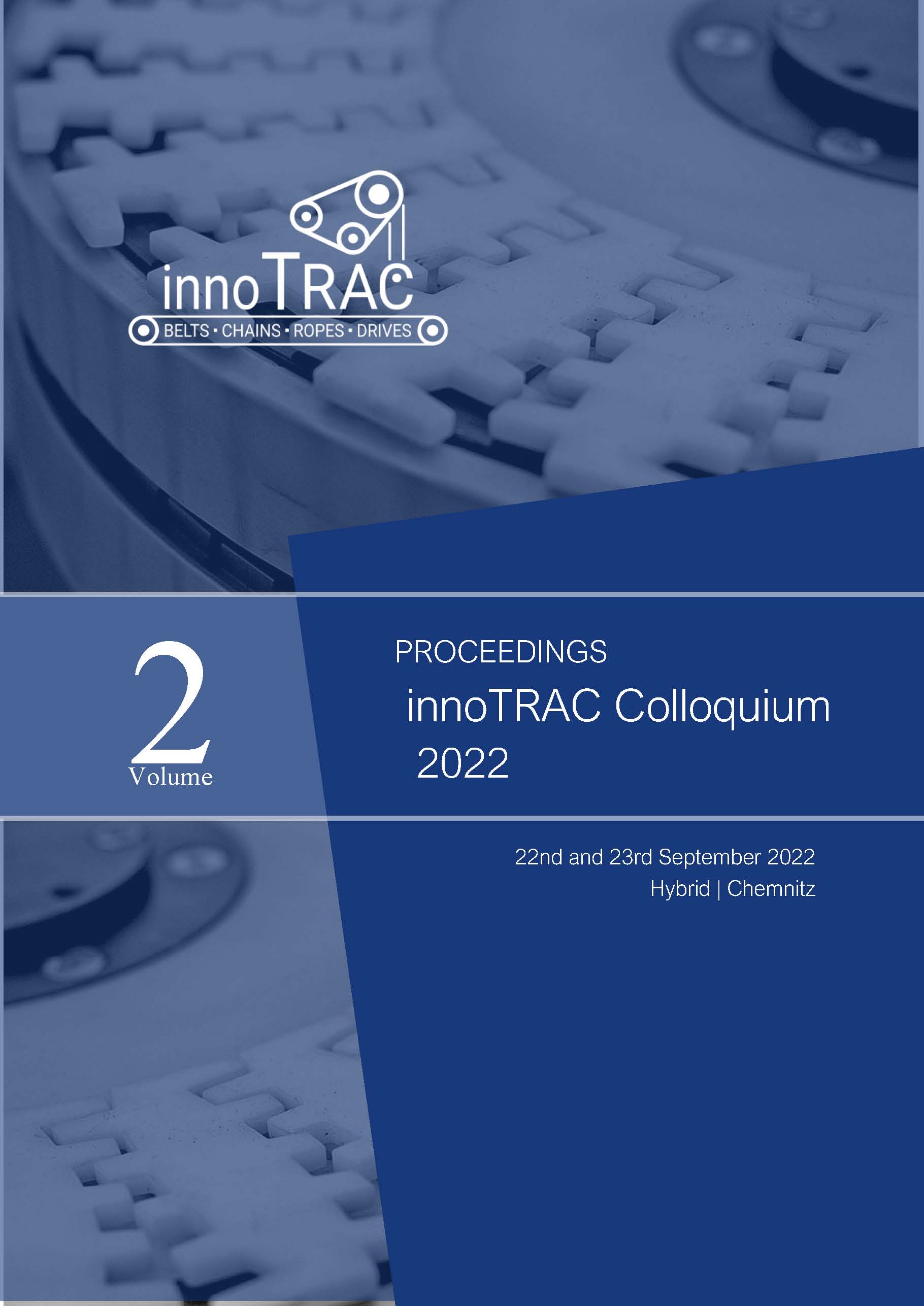Experimental verification of analytical calculation approaches and FEM material models with the aim of determining friction of thermoplastics
DOI:
https://doi.org/10.14464/innotrac.v2i1.576Keywords:
friction, thermoplastics, polymer, tribology, wear, simulation, contactAbstract
The paper presents analytical approaches for calculating the effective contact area of the sphere-plane contact, which allow conclusions to be drawn about the coefficient of friction of thermoplastics with manageable effort. These approaches are verified experimentally utilizing friction and wear tests using the example of a steel sphere against PE-UHMW. The friction area of the sphere was varied using a self-constructed adjustment unit and a spherical wedge. With the help of parametric experiments regarding the angular position of the spherical wedge, a limiting contact angle was detected. This limiting angle allows the calculation of the deformative and adhesive friction. FE models are being developed for the simulative verification of the analytical approaches and further investigations of structures for friction reduction. These require specific material models as a basis for the representation of the stress-strain behavior in contact. The different FEM material models are calibrated and compared against each other based on experimental tests. The materials POM, PP, PMMA, and PE-UHMW were considered.

Downloads
Published
How to Cite
Issue
Section
License
Copyright (c) 2022 Niels Dallinger

This work is licensed under a Creative Commons Attribution 4.0 International License.
All articles will be published open access under the license Creative Commons Attribution 4.0 (CC BY 4.0).
